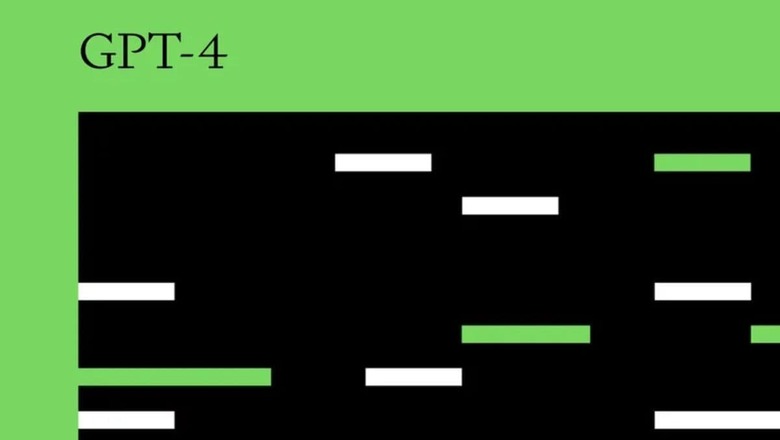
views
After the successful rollout of its popular artificial intelligence (AI) chatbot ChatGPT, the Microsoft-backed company OpenAI has started releasing a new powerful AI model GPT-4. Also known as the successor of ChatGPT, GPT-4, a human-like technology, is more creative and collaborative.
GPT-4 can generate, edit, and iterate with users on creative and technical writing tasks, such as composing songs, writing screenplays, or learning a user’s writing style.
Good news, we’ve increased our turn limits to 15/150. Also confirming that the next-gen model Bing uses in Prometheus is indeed OpenAI’s GPT-4 which they just announced today. Congrats to the @OpenAI team. https://t.co/WTVlVCVOyw pic.twitter.com/VA4Z1SDiEG— Jordi Ribas (@JordiRib1) March 14, 2023
“We’ve created GPT-4, the latest milestone in OpenAI’s effort in scaling up deep learning. GPT-4 is a large multimodal model (accepting image and text inputs, emitting text outputs) that, while less capable than humans in many real-world scenarios, exhibits human-level performance on various professional and academic benchmarks,” OpenAI said in a blog post.
“We’ve spent 6 months iteratively aligning GPT-4 using lessons from our adversarial testing program as well as ChatGPT, resulting in our best-ever results on factuality, steerability, and refusing to go outside of guardrails,” the company said.
The company is releasing GPT-4’s text input capability via ChatGPT and the API. In a casual conversation, the distinction between GPT-3.5 and GPT-4 can be subtle, OpenAI said.
The difference comes out when the complexity of the task reaches a sufficient threshold – GPT-4 is more reliable, creative, and able to handle much more nuanced instructions than GPT-3.5.
OpenAI’s latest technology in some cases represented a vast improvement on a prior version known as GPT-3.5, it said.
In a simulation of the bar exam required of US law school graduates before professional practice, the new model scored around the top 10 per cent of test takers, versus the older model ranking around the bottom 10 per cent, OpenAI said.
While the two versions can appear similar in casual conversation, “the difference comes out when the complexity of the task reaches a sufficient threshold,” OpenAI said, noting “GPT-4 is more reliable, creative, and able to handle much more nuanced instructions.”
Read all the Latest Tech News here

















Comments
0 comment